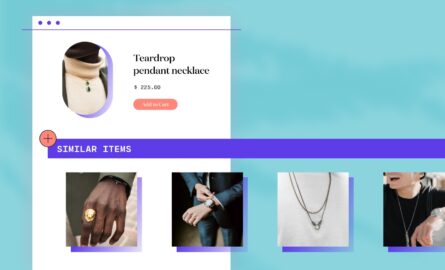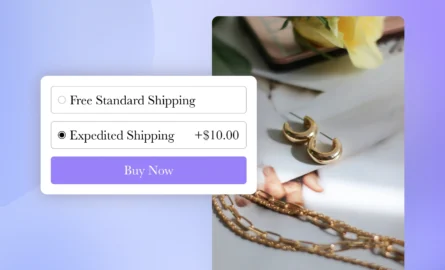User-Generated Content: Why it Boosts Sales & How to Start (+ Examples)
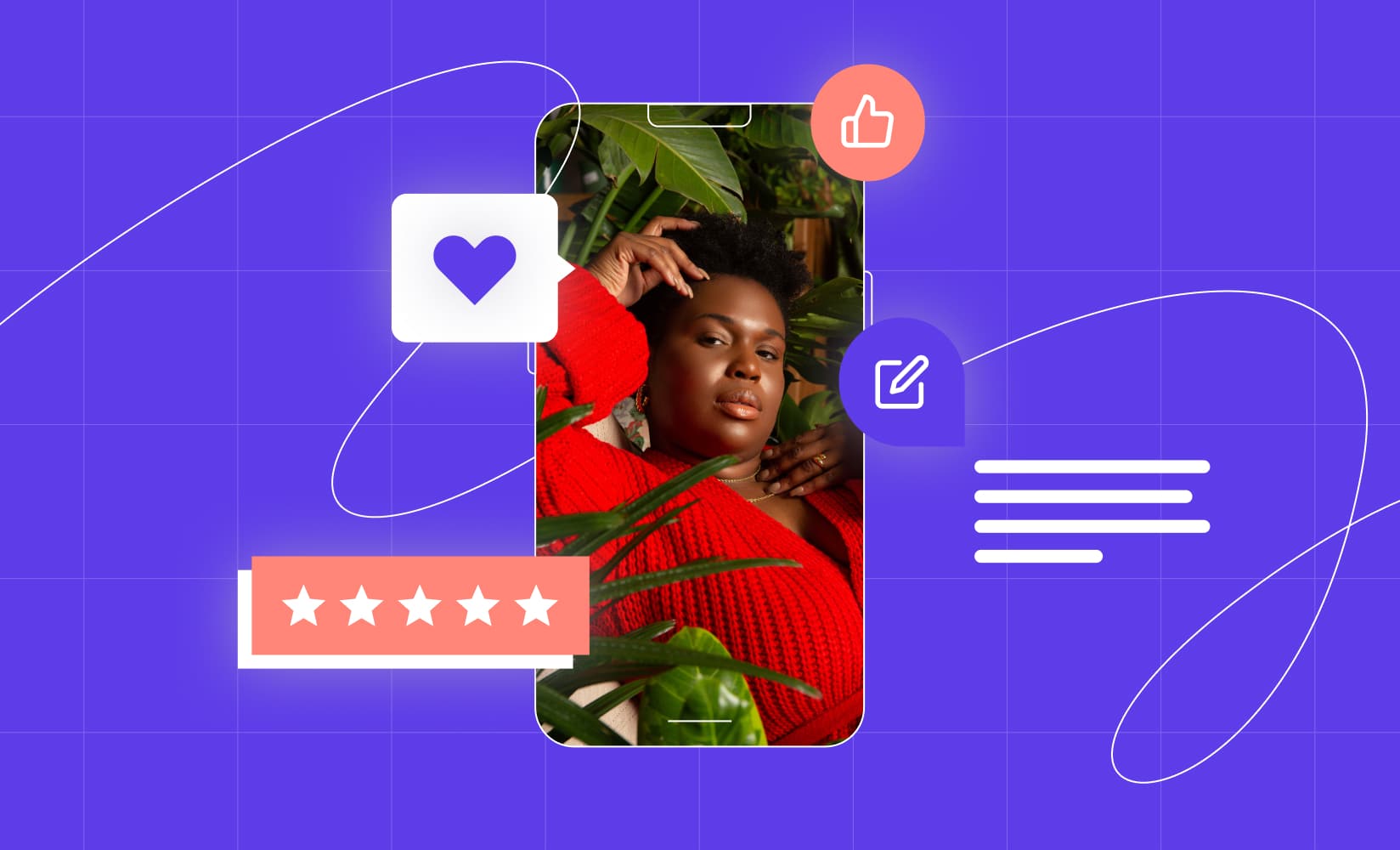
Brands are always trying to sell something, and consumers know it. It’s all a part of doing business, but it also means that shoppers view your words with skepticism.
It can be harder to generate trust when consumers see every page of your website as an overly eager salesperson.
An elegant solution—which not enough brands leverage—is to use your customers’ content instead. Their sincere opinions hold a lot of weight with other shoppers.
User-generated content (UGC) is information about your brand in the voice of your customers.
Brands crave user-generated content because of its authenticity and powerful influence over consumers. It’s trustworthy, authentic, useful, and reusable over different mediums.
Today I’m here to give you an in-depth look at what UGC is and its various benefits. I’ll also provide some tips on using it effectively, and present examples at the end.
In this article, we cover:
- The benefits of UGC marketing
- The best channels for leveraging UGC
- Types of UGC you can use
- User-generated content marketing strategies
#cta-visual-pb#<cta-title>Add powerful UGC to your store<cta-title>Use Shogun Page Builder to seamlessly incorporate UGC on any page to increase trust and build a loyal following.Start designing today
What is UGC?
User-generated content is brand-specific content—like photos, videos, product reviews/testimonials, etc—that your customers, contributors, or audience make and share.
This sort of content is easily shared on digital channels, especially social media.
Unlike brand-created content, each piece of UGC is based on an individual’s experiences and opinions, making it seem more reliable to other consumers.
This element of borrowed trust and more authenticity from real users is why brands can utilize UGC as a powerful marketing tool.

UGC is an asset to any brand for many reasons.
Content from your fans is engaging, authentic, and can be reused across different channels as a conversion lever. Let’s talk more in-depth about what UGC can do for your brand.
Conveys authenticity and inspires trust
Authenticity matters, especially in online marketing.
Shopping around gives consumers an active role in what they buy instead of just relying on the guidance of advertisements.
According to one study, advertising executives are the least-trusted professionals. The fact is that the point of ads is to tell you how great a product is, not give you the real dirt.
ExpertVoice reported that 92% of consumers would rather trust another person’s recommendation than branded content.
Meanwhile, another survey found two-thirds of its respondents said they typically consulted online reviews before buying a product or service.
This shows UGC can convey authenticity and nurture trust.
It serves as social proof, which prompts us to look to others before taking action. The more people we observe taking a similar action, the more we view it as correct.
Puts customers at the center of your story
Business is becoming more fast-paced due to the popularity of ecommerce, and companies have to keep up with trends and their audiences’ constantly evolving preferences.
Since savvy consumers can now easily switch brands, a customer-centric approach is essential.
You can demonstrate this focus by showcasing customer experiences with your brand. For instance, the skincare brand Starface uses TikTok to share videos from customers who apply its products to solve their skincare problems.
Its TikTok profile also serves as a live-action FAQ page to address customer concerns. This approach has garnered Starface 1.2 million followers and 23 million likes.
Easily repurposed for multiple channels
UGC is versatile and can be repurposed across different channels beyond just social media. Increase your ROI from UGC by utilizing it in multi-channel marketing strategies.
For example:
- Including UGC images in cart abandonment emails to motivate shoppers to finalize their purchases.
- Strategically placing UGC on landing pages to showcase social proof and boost conversions.
- Adding UGC such as video testimonials to your YouTube channel and Instagram stories.
Calvin Klein implemented a similar strategy by creating its own landing page for UGC.
It showcases customers wearing Calvin Kleins, giving visitors a glimpse of how the products look on average consumers instead of models.
Showcases your brand’s community
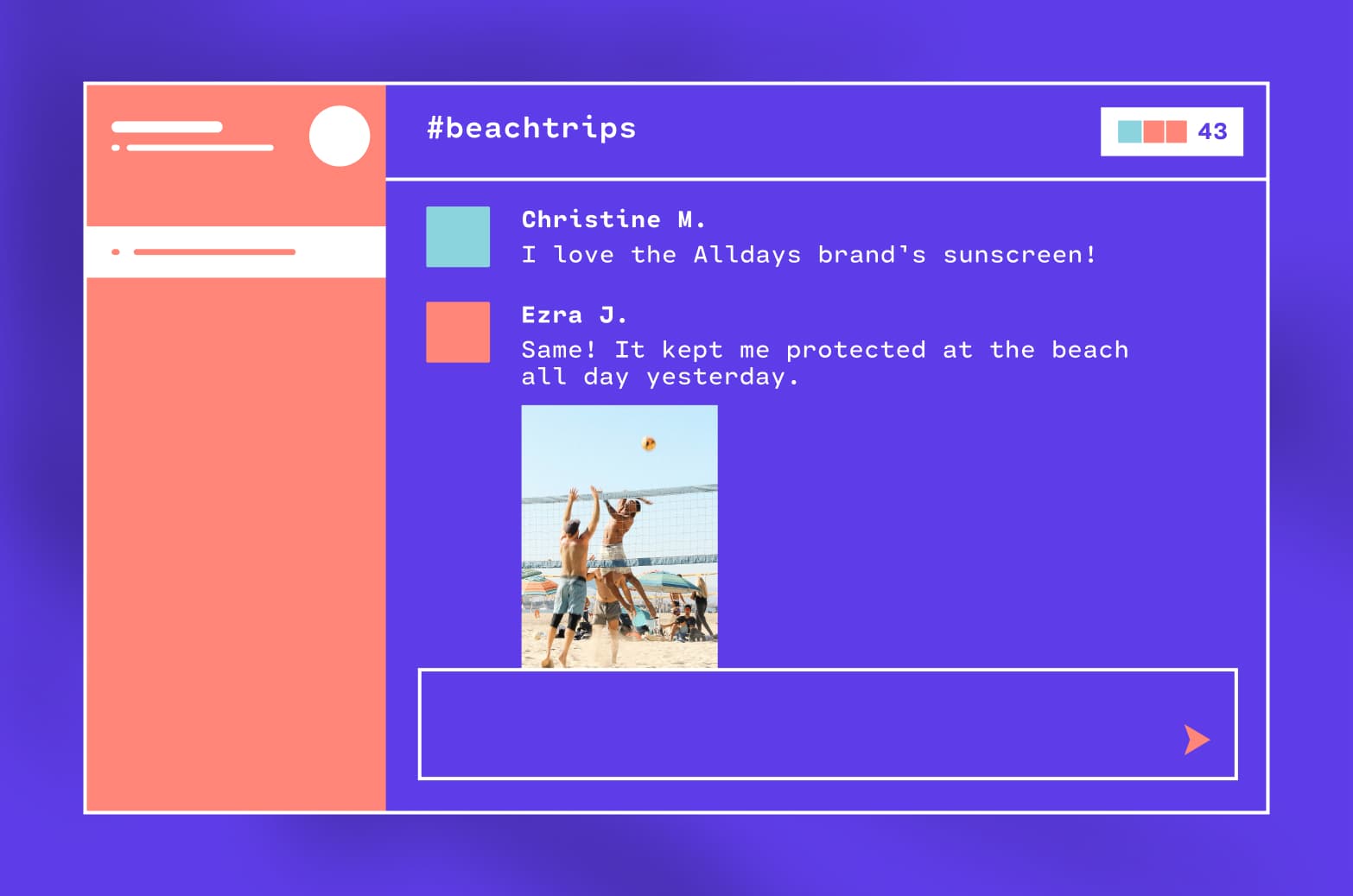
Like-minded people tend to form communities around similar interests.
The same can be said for those who love a specific product or service. UGC can help showcase what your community stands for and the culture around your brand.
Positive UGC helps nurture a business’s community.
It also improves user engagement and brand recognition. Lexxola, for instance, is a unisex eyewear brand with a community-driven approach, which could earn the brand $6 million in under two years.
It follows a Gen Z-friendly business model where the company directly speaks to and collaborates with its customers, who also share Lexxola’s products on social media.
Builds brand equity
Brand equity is the premium your business attains when consumers perceive your product as valuable.
It can directly impact the price of and desire for your product, so building a strong brand is paramount to any ecommerce business.
Consistently sharing UGC is a great way to build brand equity. Unbiased reviews from customers who share it without any incentive can build recognition, trust, and overall brand equity.
TULA Skincare, for instance, shares videos of customers using its products to address their skin issues and has grown its Instagram audience to 429 thousand followers.
Boosts conversions
UGC is an extremely effective marketing strategy for driving engagement with your brand and conversions on your site.
Here are some statistics to back it up:
- Ads combining UGC and paid content have 28% more conversions.
- UGC ads attract 20% to 50% more attention, outperforming conventional ads on a similar topic.
- UGC videos have 12 times more engagement than any other type.
We mentioned above that UGC can be leveraged across multiple different content channels.
Let’s discuss some of the best channels for sharing UGC, from tried-and-true social media to your conversion-focused landing pages.
1. Social media
Instagram and Facebook are platforms where your loyal customers can act as your brand’s marketers.
When you call on them for UGC, here’s what you should ask for:
- Their photos and videos showing your product in use
- A video review of how much they appreciate your product
- Social media posts about how your product fits into their lifestyle
- Honest reviews/testimonials, possibly talking about what they like best about your product
UGC may prove challenging to obtain since you’re asking consumers for a favor.
However, holding competitions and offering incentives like prizes, recognition, or access to a broader community can serve as motivators.
#cta-paragraph-pb#Are you posting when your audience is online? Learn the best times to post on Instagram for better engagement.
2. Review sites
Almost 9 out of 10 shoppers (89%) will look up reviews before purchasing.
That means reviews and the sites that collate them are a vital part of your buyer journey, and you should be investing in generating positive customer sentiment.
Some of the most popular places for shoppers to check reviews are on Google and your own product listing page.
Fortunately, you can control your own product pages to feature the best reviews front-and-center.
That said, you should be as transparent as possible when it comes to negative sentiment (just respond publicly to show shoppers you’re proactive).
Shopify is one ecommerce platform where you can use product review apps to gather feedback from customers.
These UGC reviews can be used for gaining product insights and boosting your marketing efforts:
- Okendo, for example, lets you use reviews in shoppable galleries and on social media.
- Stamped, meanwhile, has custom forms for capturing detailed product insights. It also lets you use the gathered UGC in your Instagram feed and retargeting ads.
- Yotpo is another tool that can collect product reviews, photo reviews, site reviews, and ratings from across the web to display on your website.
#cta-paragraph-pb#Shogun Page Builder works with Yotpo and Shopify’s Product Reviews to organize your reviews across your website and display your best UGC.
Tip: In addition to collating reviews on your website, you should also invest in generating positive reviews across your online profiles, such as your Google listing.
Consumers search for and compare reviews across the web, not just on your product pages.
3. Email newsletter
An email newsletter can also be an effective UGC marketing channel.
One way to leverage it is through a referral program that rewards social proof. The underwear brand MeUndies, for instance, promotes their referral program in their newsletter.
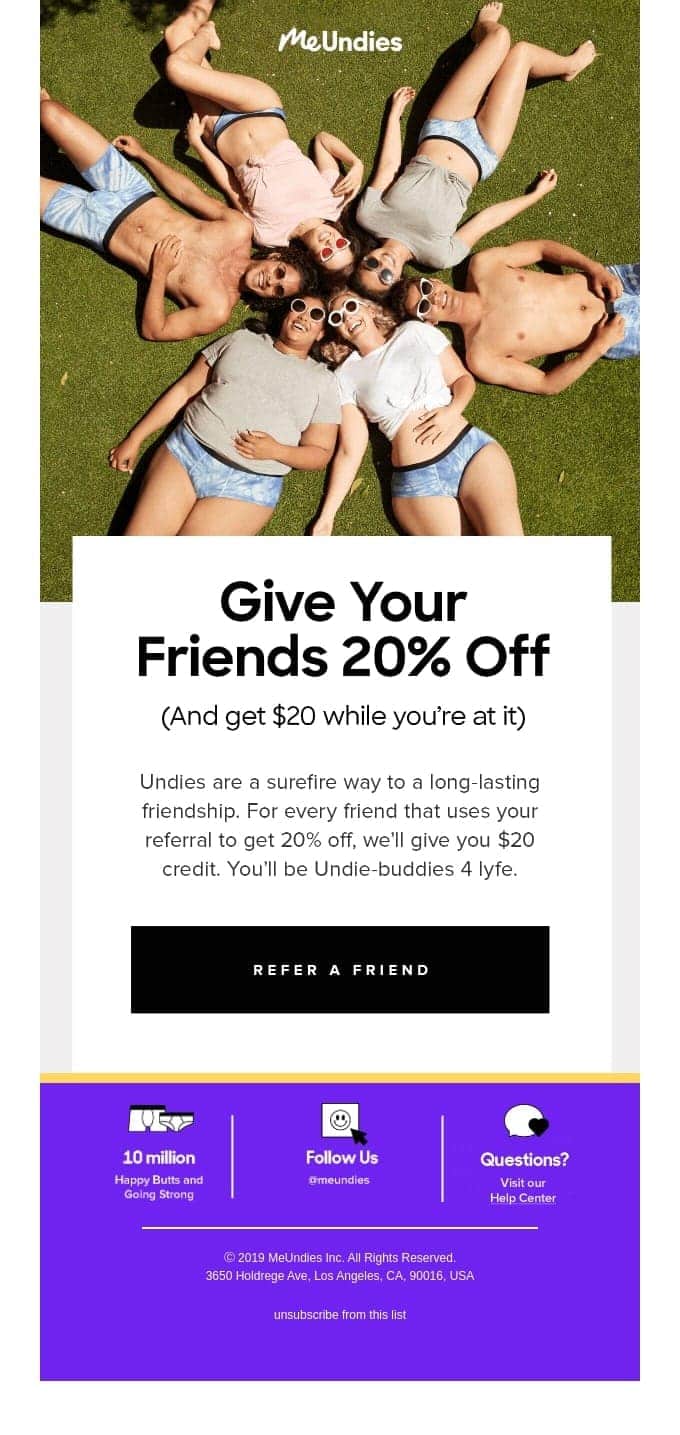
Having happy customers who willingly share your product with their social networks can extend your reach and foster trust in your brand.
However, remember to:
- Emphasize your program’s benefit (MeUndies displays it in large letters)
- Place the spotlight on your audience (the email emphasizes how the customer is giving their friends a discount)
- End with a single CTA and address any objections through reassuring footnotes
- Link to your program’s signup page or FAQ page
4. Landing pages and store pages
Plastering user-generated content across your landing pages and store pages is a great way to showcase your customers and brand.
In fact, videos of customers using your products can drive impressive conversions.
The outdoor goods brand Barebones Living is an excellent example of a company that effectively incorporates UGC on its website.
It fills its Instagram feed with images and videos of customers using their products for visitors to see, showing how it fits into the lives of real people.
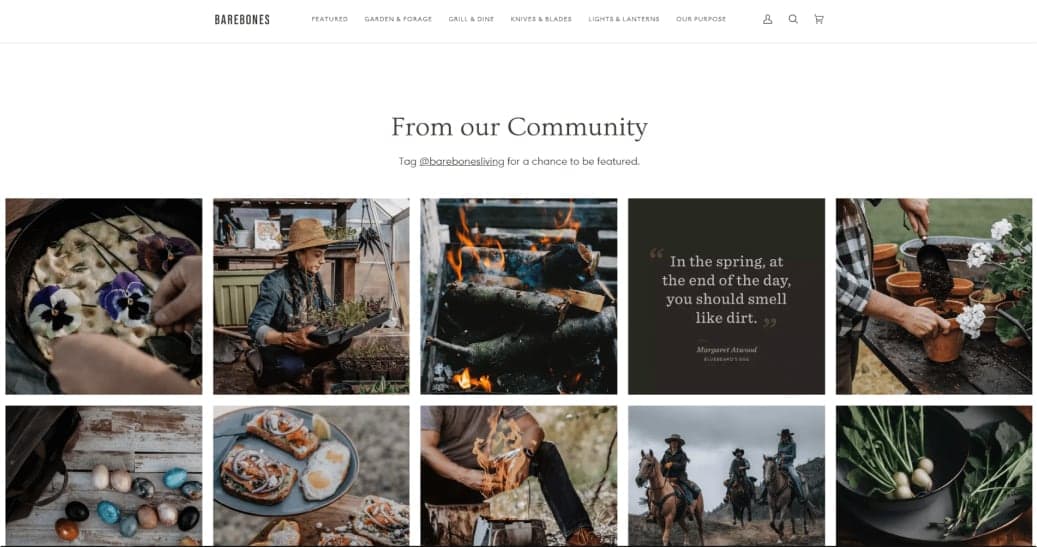
Remember to ask for permission before tapping into that content, though, then strategically place it where it can convert shoppers into customers.
5. Paid ads
Pairing paid ads with UGC marketing can deliver magnificent results.
According to a study by Annex Cloud, ad campaigns on Facebook and Instagram that use UGC photos see a 50% increase in click-through rate and five times the return on ad spend.
Crown Resorts, for example, runs UGC-driven ads on Facebook (clarifying in the caption that it’s a guest-provided photo). These dynamic advertisements resulted in the following benefits for the brand:
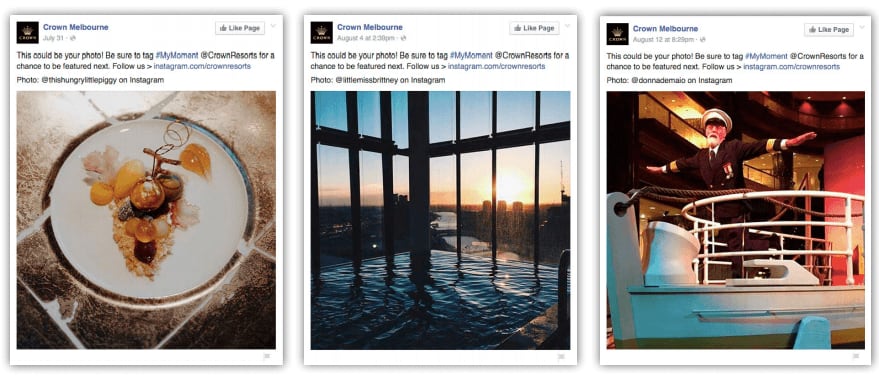
- 21% lower cost per thousand impressions (CPM)
- 40% more impressions
- 25% higher positive engagement (as measured by likes)
- 61% lower cost per like
All user-generated content is valuable, but UGC can come in different forms.
For example, a video testimonial from a customer, a review left on your Google Business page, and a tag in an Instagram post are all distinct UGC types.
Three places to start looking for different kinds of UGC include social media, your review sites, and your existing customers.
Social media
Social media user-generated content includes videos, photos, and sometimes audio and text that your customers share showing themselves using your product via social media.
For example, if you want more UGC photos, look to Instagram. If you want more UGC videos, look to YouTube. If you want text-based UGC, look to Twitter.
These types of UGC can be easily seen scattered all over different social platforms.
They’re typically posted by satisfied customers, but brands can also employ them to attract attention, for example:
- Peter Thomas Roth – Its Instant FIRMx Eye Temporary Eye Tightener went viral and saw boosted sales thanks to a TikTok post from Trinidad Sandoval showing how she used the product in her daily routine. The brand also reposted the video on its Instagram page for even more exposure.
- G Adventures – The travel company loads its Instagram account with social proof. It also asks its customers to use the hashtag #gadventures so their posts can be featured on the company’s Instagram feed.

Testimonials
This type of UGC can appear in different forms like text, photo, video, or a combination of the three.
Customer testimonials are powerful because they’re positive experiences from people who’ve used your products.
One way to gather this UGC is to ask for testimonials through email campaigns and then display them on your website. Patagonia’s Worn Wear stories page is an outstanding example of the proper use of customer testimonials.
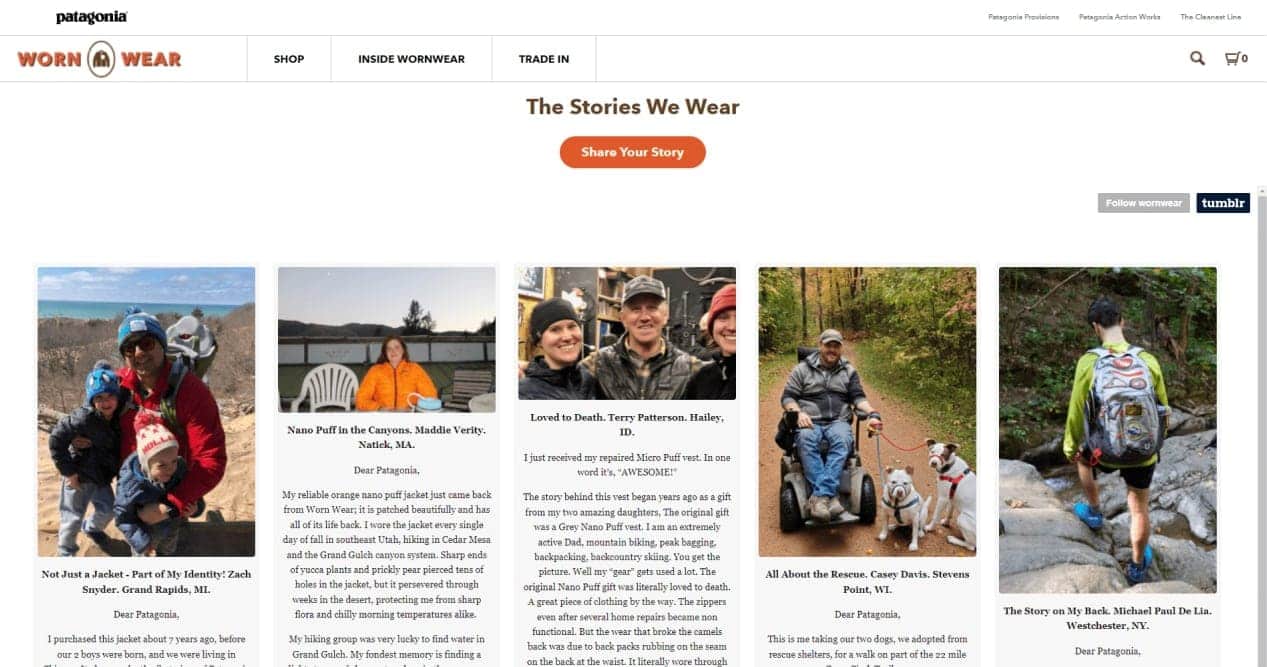
This page showcases people’s adventures while sporting Patagonia gear and includes photos of how it complements their lives.
From a business perspective, you can think of testimonials as a sort of case study of how your customers use your products.
Reviews
Customer reviews offer shoppers a glimpse of how customers feel about what they purchased from your brand.
The main difference between reviews and testimonials is that reviews are usually more objective, whereas testimonials are largely brand-positive.
Testimonials are sometimes referred to as first-party reviews and are obtained directly from your customers via customer interviews, case study calls, and emailed requests.
On the other hand, reviews are most commonly collected on third-party review sites.
Third-party reviews are posted and shared on third-party websites like Yelp, Facebook, and Google. As a result, you have no control over them.
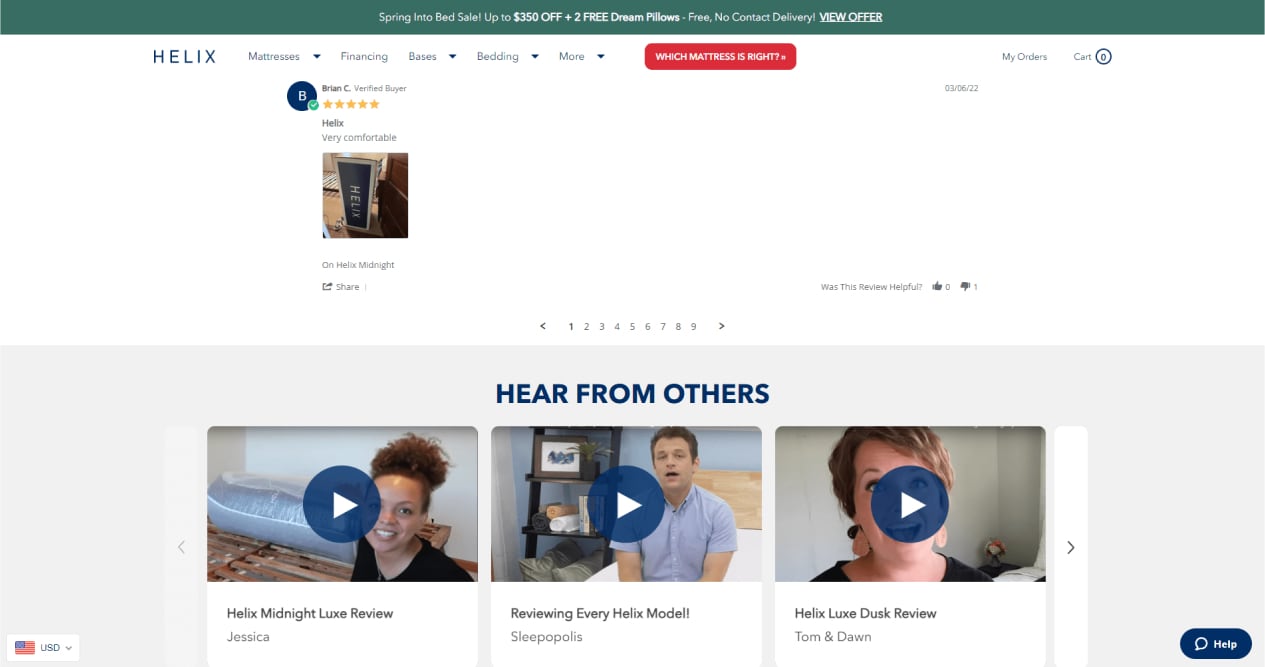
The mattress brand Helix takes advantage of this type of UGC on its dedicated reviews page.
It displays both written reviews—with supporting photos—and video reviews from happy customers who describe their experiences with the company’s mattresses.
#cta-visual-pb#<cta-title>Create your own UGC page<cta-title>Drag and drop customer testimonials, reviews, and social shares with Shogun Page Builder.Start building for free
Now that we’ve covered what’s so great about UGC and the different types you can collect, here are some tips on effectively gathering and using it.
1. Run hashtag contests
Hashtag contests can increase brand awareness and generate UGC simultaneously.
Rewarding followers through giveaways for posting on social media can attract engagement.
But before executing your contest, be sure to follow these guidelines:
- Create a memorable branded hashtag. This gathers all relevant UGC for you and helps your contest stand out in participants’ minds.
- Provide clear guidelines. This lets contestants know what they’re getting into and prepare for it. Established rules can also encourage participation.
- Make sure the reward matches the effort. A prize that fails to compensate for the necessary work is an unappealing motivator.
- Remember to promote it. A hashtag contest also requires marketing to obtain enough participants and make it a true competition.
2. Employ gamification
This strategy is all about making sharing user-generated content fun and rewarding.
Gamification not only engages and entertains customers but also gives them a reason to share their experiences with your brand.
Here are some tips to help you gamify UGC sharing for customers:
- Let them earn points for their social media posts, which can then be exchanged for discounts or coupons.
- Allow customers to receive unlockable freebies as they make more repeat purchases and UGC.
- Keep an onboarding checklist to provide consumers with a seamless experience.
3. Leverage the seasons
The Winter holiday season, for instance, is a prime opportunity to collect consumer content.
For example, you could launch campaigns with a CTA that states, “Tag us in your X,” to compel customers to tag you in photos or videos of their Christmas shopping haul.
The same could be said for Summer, the perfect time for swimwear and sunscreen brands to generate UGC.
Sharing content from customers who use your products during their beach trips can attract significant attention to your brand at the right moment.
4. Create a share-worthy experience
Creating an exciting unboxing experience can encourage your customers to share UGC.
Palladio Beauty, for example, reposted a customer’s unboxing and makeup tutorial on Instagram, which highlighted the trendy design on the product’s box.
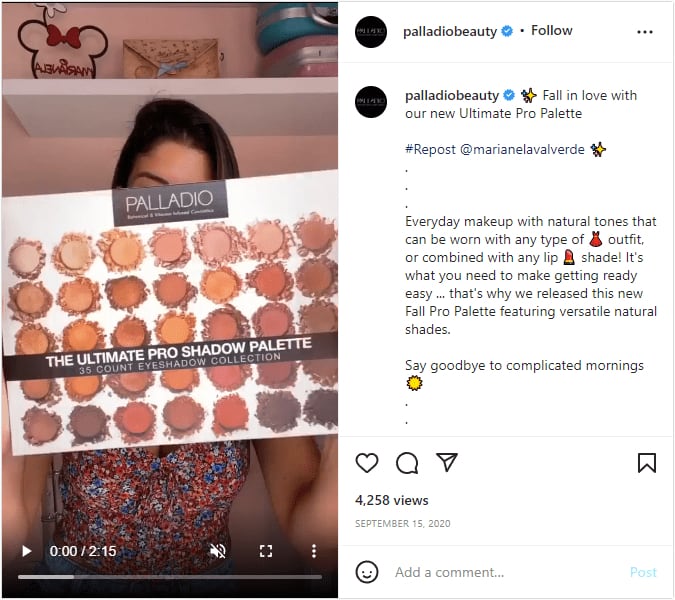
Remember to include a short note with your product telling the customer to share their unboxing.
You can also send an email a few days or weeks after they receive their package, asking them to share their feedback on social media.
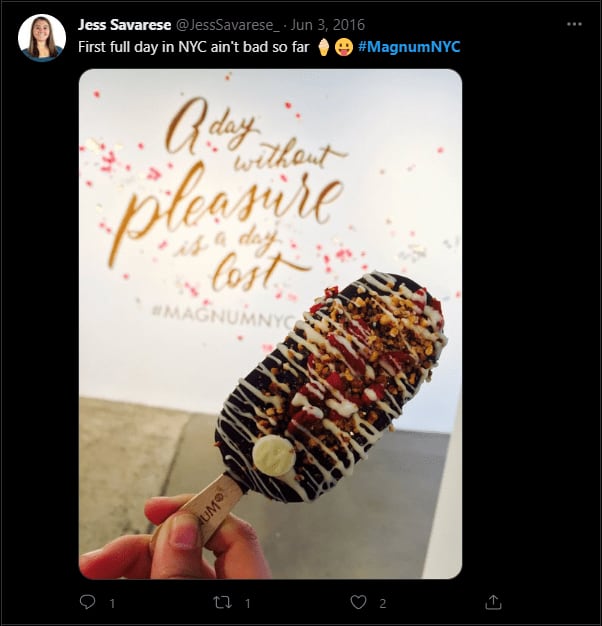
Even a trip to a pop-up store can turn into a unique, shareable event.
Magnum Ice Cream’s pop-up store in New York City offered customers just such an opportunity. It lets them decorate their ice cream, snap a photo using provided backdrops, and then share it on social media with a branded hashtag.
5. Intersperse UGC opportunities throughout the buyer journey
Strategically offering customers the chance to share UGC at different steps of the buyer’s journey can help you accumulate vital marketing content.
Typically, there are three steps along this journey that provide customers the most excitement—and here’s how you can utilize them:
- When they first purchase a product – You can display your branded hashtag/UGC CTA at checkout or in the purchase confirmation, offering the customer an opportunity to share the excitement of a new purchase.
- When they receive their product – Adding an insert to your product or placing the branded hashtag on its actual packaging inspires customers to show others the joy of receiving a highly anticipated item.
- When they experience the benefits of the product – Reaching out to your customer for feedback sometime after they’ve used your product can produce an abundance of UGC. You can also present a CTA once they reorder.
6. Work with influencers
Businesses who utilize influencer marketing make $5.78 ROI for every $1 they spend. This makes collaborating with influencers a powerful UGC strategy.
You can seed influencers with your product to find those who genuinely love it (sincere appreciation for your product will make it easier to promote).
An influencer can share glowing testimonials for the product you sent based on their enjoyment alone.
However, to form a fruitful working relationship with influencers, you can sponsor them or make them your brand partners. Just be sure to find the right ones.
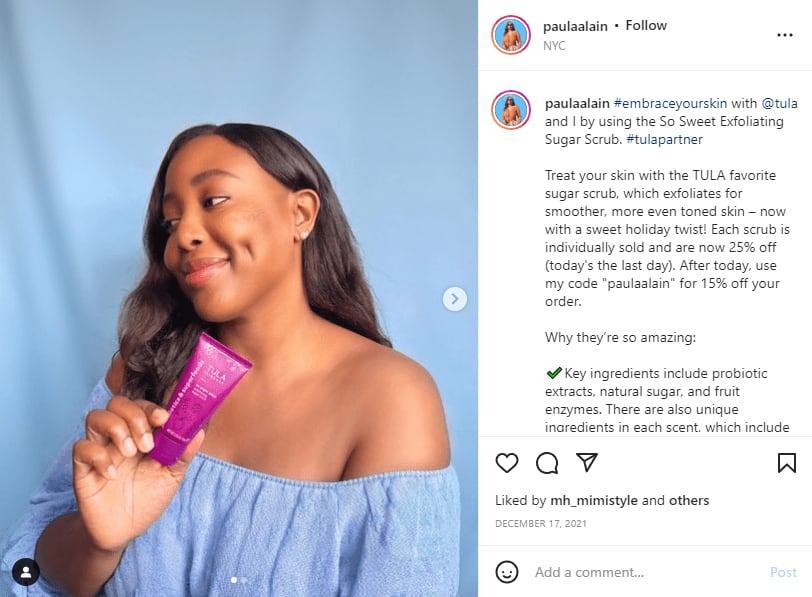
The probiotic skincare brand TULA is a great example of an influencer collaboration.
Through its #TULApartner program, the brand works with beauty influencers like Paula Alain and asks them to share their favorite TULA products.
7. Repurpose your UGC for different channels
Your UGC needs to fit the platform you’ll be using, but it can also be adapted to other channels.
To repurpose your content effectively, you need to know where it works best:
- Facebook. A fantastic option for sharing images with lengthy captions and long-form videos/stories. However, its algorithm can be tough for organic reach.
- Twitter. Despite a small character count, this is a great platform for image sharing. You can even create a live Twitter feed for real-time event coverage.
- Instagram. High-quality lifestyle images and videos are your go-to on this platform. It’s also great for reposting and discovering UGC.
- TikTok. Genuine and less-refined short-form videos work best on this channel. TikTok’s comments section is also a prime spot for high user engagement.
- LinkedIn. Being a social network for professionals, employee-generated content and reviews from other professionals work best here. Just make sure they’re properly vetted and relevant to your goals.
- YouTube. This platform is ideal for UGC, like unboxing videos, vlogs, and video reviews from professionals or YouTubers who are well known in their respective niches.
- Store pages or landing pages. Reviews and testimonials work best for these channels. Images and videos are also options, as long as they’re strategically placed.
8. Set clear UGC goals
To set your UGC goals properly, build in attribution first.
This is incredibly important because so many factors affect customer habits, so you need to know what to target.
Ask where people found you, and then look at how they affect conversion rates with A/B testing.
Do this for the various channels you use and analyze the results. From there, you can establish objectives for each channel and start to develop your strategies.
Effective user-generated content examples
Finally, to provide some inspiration, here are some examples of brands effectively implementing UGC.
Share a Coke
This award-winning campaign by Coca-Cola, which originated in Australia, involved producing and selling Coke bottles and cans with peoples’ names on the labels.
The idea inspired customers to share pictures of their personalized Coke bottles and cans on various social media platforms.
Customers could even create their own Coke bottles via the company’s website.
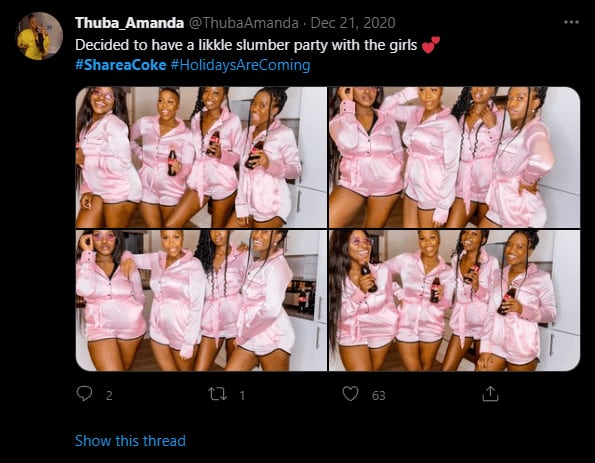
The campaign has run in over 80 markets in the last seven years, even reversing an 11-year consumption decline in the U.S.
Starbucks Red Cup Contest
Starbucks launched a Christmas campaign back in 2015 called the #RedCupContest.
It was a simple idea where customers would take photos of their Christmas-themed red cups, then Starbucks would choose five lucky winners to receive $500 gift cards each.

The event-based campaign was a massive hit and spread on social media like wildfire.
By the end of it, Starbucks received thousands of UGC photos they could use for marketing. It was also a massive win for the brand since the campaign significantly drove its holiday sales.
Unboxing videos
Unboxing videos are a type of UGC that work well for food companies.
ASMR channels, where content creators unbox different items, can garner millions of views and attention for brands.

One example is this video from the YouTube channel Gentle Whispering ASMR, where the channel creator unboxes and prepares a meal from Blue Apron.
The video to date has more than 1.5 million views, which is 1.5 million potential Blue Apron customers who were able to see precisely how the program works.
Leverage user-generated content for brand success
UGC is a valuable source of social proof that can influence purchasing decisions thanks to authenticity and trust.
With so many types of UGC to leverage, any brand can benefit—as long as they use the right channels for it.
You can employ numerous strategies to collect user-generated content. However, remember to set goals before implementing them—the content you gather will fail to win conversions without proper goal setting.
Now that you know all about UGC, what it can do, and how you can use it, your next campaign will likely be easier to run and more successful.
Get your customers to help you attract even more customers!
#cta-visual-pb#<cta-title>Create a page to show off your loyal fans<cta-title>Use Shogun Page Builder to curate and showcase all that user-generated content that’ll drive customer trust through the roof.Design your page today

Rachel Go
Rachel is a remote marketing manager with a background in building scalable content engines. She creates content that wins customers for B2B ecommerce companies like MyFBAPrep, Shogun, and more. In the past, she has scaled organic acquisition efforts for companies like Deliverr and Skubana.

